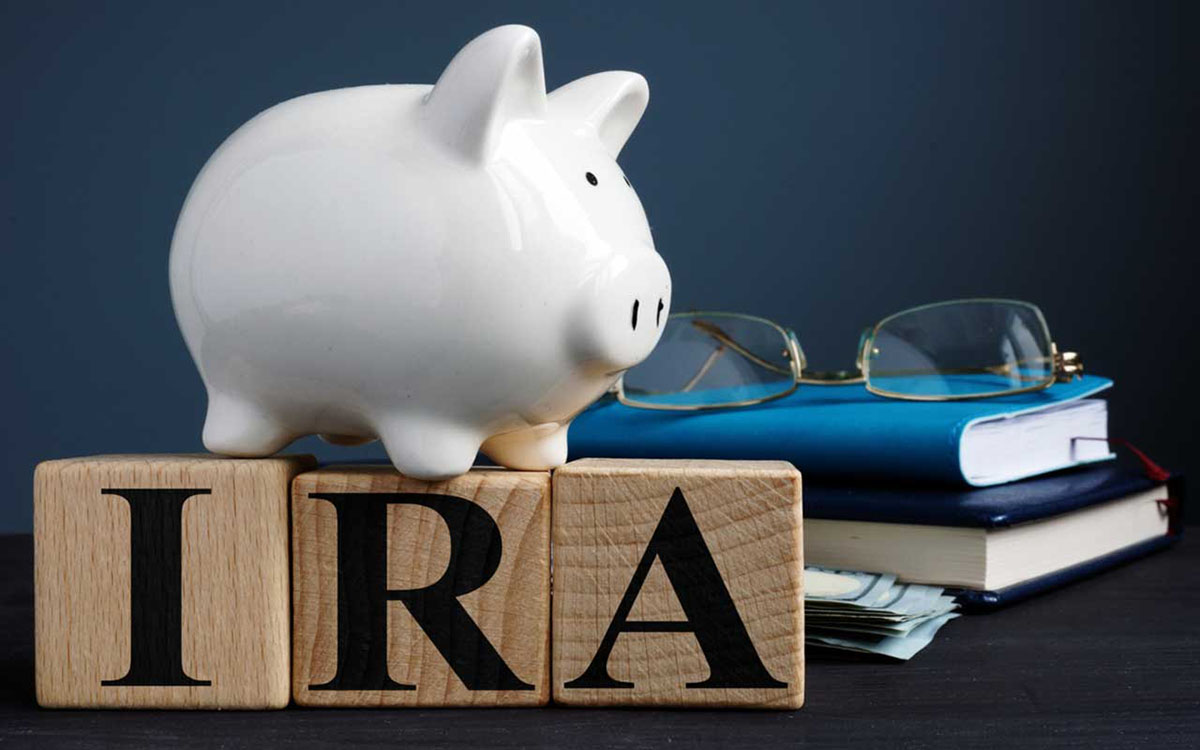

Finance
What Is A Revolving Savings Account Used For?
Published: November 26, 2023
Discover how a revolving savings account can help you with your finances. Learn more about the benefits and uses of this versatile financial tool.
(Many of the links in this article redirect to a specific reviewed product. Your purchase of these products through affiliate links helps to generate commission for LiveWell, at no extra cost. Learn more)
Table of Contents
Introduction
A revolving savings account, also known as a flexible savings account, is a financial tool that allows individuals to save and withdraw money as needed. Unlike a traditional savings account, which typically has restrictions on how often you can access your funds, a revolving savings account offers more flexibility and convenience.
Many people are familiar with the concept of a savings account, where you deposit money and earn interest over time. However, a revolving savings account takes it a step further by allowing you to continuously deposit and withdraw funds without penalties or limitations.
This type of account can be particularly useful for individuals who want to have easy access to their savings while still earning some interest. Whether you’re saving for an emergency, a specific goal, or just want to have a safety net for unexpected expenses, a revolving savings account can be a helpful financial tool to have in your arsenal.
Understanding Revolving Savings Accounts
A revolving savings account functions similarly to a regular savings account, where you can deposit and withdraw funds at your discretion. However, the key difference is that a revolving savings account usually offers higher interest rates compared to traditional savings accounts.
When you deposit money into a revolving savings account, it starts earning interest immediately. The interest is usually calculated on a daily or monthly basis, and it compounds over time. This means that your balance will continuously grow as long as you keep depositing funds.
One of the main advantages of a revolving savings account is that it allows you to withdraw money whenever you need it, without restrictions or penalties. This flexibility sets it apart from other types of savings accounts where you may face limitations on how often you can access your funds. With a revolving savings account, you have the freedom to save and spend as needed.
It’s important to note that while revolving savings accounts offer higher interest rates, they may also require a higher minimum balance or charge fees if the balance falls below a certain threshold. Therefore, it’s essential to review the terms and conditions of the account before opening one.
Additionally, some banks may offer additional features with their revolving savings accounts, such as the option to link it to a checking account or access funds through an ATM or debit card. These features can further enhance the convenience and accessibility of your savings.
Benefits of a Revolving Savings Account
A revolving savings account offers several advantages that can help individuals manage their finances effectively and achieve their financial goals. Here are some key benefits of having a revolving savings account:
- Flexibility: The primary benefit of a revolving savings account is the flexibility it provides. You can deposit and withdraw funds at any time without penalties or restrictions. This makes it an ideal choice for individuals who want to have easy access to their savings for emergencies or unforeseen expenses.
- Earning Interest: Unlike a traditional savings account, a revolving savings account often offers higher interest rates. This means that your money can grow faster over time, allowing you to maximize your savings potential.
- Convenience: With a revolving savings account, you have the convenience of managing your savings alongside your day-to-day expenses. Many banks offer online and mobile banking options, making it easy to transfer funds between your checking and savings accounts.
- Protection: Having a revolving savings account can provide a financial safety net. By setting aside money in this account, you can be better prepared for unexpected events or emergencies, helping to alleviate financial stress.
- Goal-oriented Saving: A revolving savings account is also beneficial for saving towards specific goals, such as a down payment for a home or a dream vacation. You can allocate funds specifically for these goals, making it easier to track your progress and stay motivated.
By taking advantage of these benefits, a revolving savings account can serve as a valuable tool to help you manage your finances, grow your savings, and achieve your financial objectives.
Common Uses for a Revolving Savings Account
A revolving savings account can serve a variety of purposes depending on your financial goals and needs. Here are some common uses for a revolving savings account:
- Building an Emergency Fund: One of the most important uses of a revolving savings account is to build an emergency fund. Life is full of unexpected expenses, such as medical bills, car repairs, or job loss. Having a dedicated account where you can quickly access funds can provide peace of mind and financial security.
- Planned Expenses and Large Purchases: A revolving savings account can also be used to save for planned expenses or large purchases, such as a down payment on a house, a wedding, or a dream vacation. By regularly contributing to your revolving savings account, you can accumulate the funds needed without jeopardizing your daily expenses.
- Debt Repayment: If you have outstanding debts, using a revolving savings account to make extra payments can be a smart financial move. By allocating funds to pay off high-interest debts, such as credit card balances or personal loans, you can reduce the amount of interest you’ll pay over time and speed up your debt repayment process.
- Education and Personal Development: Whether you’re planning to pursue higher education or want to invest in personal development courses, a revolving savings account can be a useful tool. By dedicating a portion of your savings toward improving your skills and knowledge, you can invest in your future and enhance your career prospects.
These are just a few examples of the many possible uses for a revolving savings account. The beauty of this type of account lies in its versatility and flexibility, allowing you to adapt it to your specific financial needs and goals.
Building an Emergency Fund
One of the most crucial uses for a revolving savings account is building an emergency fund. An emergency fund is a financial safety net that helps protect you from unexpected expenses, such as medical emergencies, job loss, or major home repairs.
Building an emergency fund is essential because it provides a buffer in times of financial uncertainty, reducing the need to rely on credit cards or loans. It offers peace of mind and helps you navigate through challenging situations without disrupting your financial stability.
Here are some steps to effectively build an emergency fund using a revolving savings account:
- Set a Savings Goal: Determine how much you want to save for your emergency fund. Financial experts recommend having at least three to six months’ worth of living expenses as a baseline. However, you can adjust this based on your individual circumstances and needs.
- Create a Budget: Assess your income and expenses to identify areas where you can cut back and save more. By creating a detailed budget, you can allocate a portion of your income towards your emergency fund.
- Automate Savings: Set up automatic transfers from your regular checking account to your revolving savings account. This ensures consistency in saving and removes the temptation to spend the money elsewhere.
- Save Windfalls and Extra Income: Direct any windfalls or unexpected extra income, such as tax refunds or bonuses, into your emergency fund. This accelerates your savings growth and helps you reach your goal faster.
- Replenish and Maintain: If you need to use funds from your emergency fund, make it a priority to replenish the amount withdrawn as soon as possible. Regularly assess and adjust your savings goal based on any changes to your financial situation.
Having a dedicated revolving savings account for your emergency fund allows you to easily access funds when needed. It ensures that you’re prepared for any unexpected financial circumstances and can navigate through challenging times with confidence and stability.
Planned Expenses and Large Purchases
A revolving savings account can be a valuable tool when saving for planned expenses or large purchases. Whether you’re saving for a down payment on a house, a dream vacation, or a major home renovation, having a dedicated account allows you to accumulate funds over time without disrupting your regular savings or daily expenses.
Here are some practical tips for using a revolving savings account to save for planned expenses and large purchases:
- Set a Savings Target: Determine how much money you need to save for your planned expense or large purchase. This will serve as your savings goal and help you track your progress.
- Create a Timeline: Set a realistic timeline for achieving your savings goal. Divide the total amount you need to save by the number of months or years you have to determine how much you need to save each month.
- Adjust Your Budget: Review your budget to identify areas where you can reduce expenses or increase your savings. Consider cutting back on non-essential spending and redirecting those funds towards your revolving savings account.
- Automate Savings: Set up automatic transfers from your regular checking account to your revolving savings account. This ensures consistent contributions towards your savings goal and makes saving effortless.
- Explore Additional Income Sources: Consider finding ways to earn extra income to accelerate your savings. This could involve taking up a side gig, freelancing, or selling unwanted items.
By utilizing a revolving savings account, you can watch your savings grow steadily over time. The interest earned on the account can also contribute to reaching your savings goal faster.
Remember, as you save towards a planned expense or large purchase, it’s important to regularly review your progress and adjust your savings strategy if necessary. Stay focused on your goal and celebrate milestones along the way to stay motivated and committed to achieving financial success.
Debt Repayment
A revolving savings account can be a useful tool for individuals working towards paying off their debts. By using a revolving savings account strategically, you can make extra payments towards your debts and expedite your journey to becoming debt-free.
Here’s how you can use a revolving savings account to aid in your debt repayment:
- Assess Your Debt: Start by assessing your outstanding debts, including credit card balances, personal loans, or student loans. Calculate the total amount owed and the interest rates associated with each debt.
- Create a Repayment Plan: Devise a repayment plan that focuses on paying off your highest interest debts first. Allocate a portion of your monthly income to make regular payments towards your debts.
- Save and Pay: Utilize your revolving savings account to save money that can be used for additional debt payments. Every month, deposit a predetermined amount into your revolving savings account and periodically use those savings to make extra payments on your debts.
- Track Your Progress: Monitor your debt repayment progress closely. As you make additional payments, the overall balance and interest charges will decrease, helping you save money in the long run.
- Review and Adjust: Regularly reevaluate your debt repayment plan and adjust it if necessary. As you pay off one debt, reallocate the funds towards the next one to speed up your debt payoff journey.
Keep in mind that while using a revolving savings account for debt repayment can be beneficial, it’s essential to maintain a balance between saving and paying off your debts. Consider factors such as interest rates, minimum monthly payments, and any potential penalties associated with early debt repayment.
By utilizing your revolving savings account strategically, you can accelerate your debt repayment and save money on interest charges. It’s important to stay disciplined and committed to your repayment plan to achieve financial freedom.
Education and Personal Development
A revolving savings account can play a crucial role in funding your education and personal development goals. Whether you’re looking to pursue higher education, attend workshops or conferences, or invest in personal growth, having a dedicated account can help you achieve these aspirations.
Here’s how you can use a revolving savings account to support your education and personal development:
- Define Your Educational Goals: Determine the type of education or personal development you want to pursue. This could include earning a degree, obtaining a certification, learning a new skill, or attending seminars and workshops.
- Research the Costs: Research and estimate the costs associated with your educational goals. This includes tuition fees, course materials, travel expenses, or any other relevant expenses.
- Break It Down: Break down the total costs into manageable savings goals. Determine how much you need to save by a certain timeframe to achieve your educational or personal development goal.
- Create a Savings Plan: Develop a savings plan that aligns with your timeline and goals. Determine how much you need to save each month and adjust your budget accordingly.
- Automate Contributions: Set up automatic transfers from your regular checking account to your revolving savings account. This ensures that you consistently contribute towards your education or personal development savings goal.
- Explore Scholarships and Financial Aid: Research scholarship opportunities or financial aid options that may be available to you. These resources can help offset some of the costs associated with your education or personal development endeavors.
- Monitor Your Progress: Regularly track your savings progress and make adjustments as necessary. Celebrate small milestones along the way to stay motivated and focused on achieving your educational goals.
By using a revolving savings account, you can proactively save for your education or personal development aspirations. Your savings will grow over time, allowing you to invest in yourself and open doors to new opportunities.
Remember, every step you take towards your education and personal development is an investment in yourself and your future. Stay committed to your savings plan and prioritize your growth and development.
Conclusion
A revolving savings account is a powerful financial tool that offers flexibility, convenience, and the potential for higher interest rates. Whether you’re looking to build an emergency fund, save for planned expenses, repay debts, or invest in education and personal development, a revolving savings account can help you achieve your financial goals.
By understanding how to use a revolving savings account effectively, you can take control of your finances and make your money work harder for you. Establishing a savings goal, creating a plan, and automating your contributions will set you on a path towards financial success.
Remember, the key to success with a revolving savings account is discipline and consistency. Regularly review your progress, adjust your savings strategy as needed, and stay committed to your financial goals.
As you prioritize saving, keep in mind that a revolving savings account is just one component of a well-rounded financial plan. Consider working with a financial advisor or exploring other investment options to diversify and grow your wealth.
Ultimately, a revolving savings account empowers you to take charge of your financial future. Start saving today, and watch your funds grow as you work towards a more secure and prosperous tomorrow.














